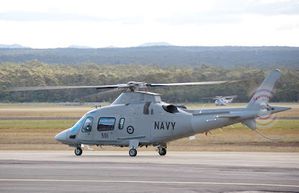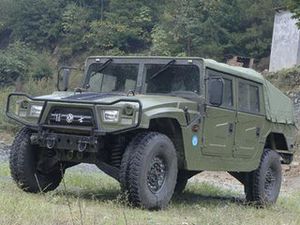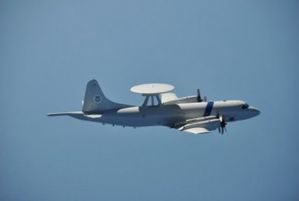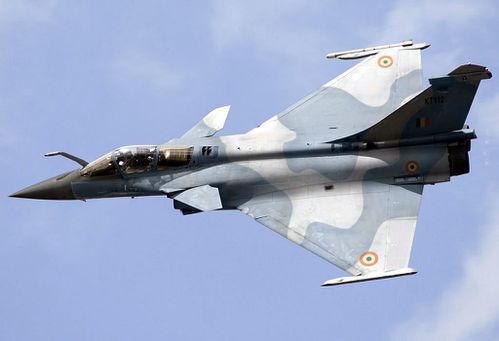Indian Air Force (IAF) has finalised the long awaited deal of 126 Medium Multi Role Combat Aircraft (MMRCA) with Dassault, a leading aviation industry of France. Dassault will deliver 126 Rafale MMRCA to India in the next decade. The first batch of 18 aircrafts will be delivered from France. The remaining aircraft will be built in India. The $11bn (£7bn) contract is the biggest ever procurement made by the IAF. The Rafale Multirole fighter/bomber aircraft can participate in air, ground and sea operations in both short and medium ranges. In an additional multi-billion weapons package for these 126 aircraft, India will buy air-to-air and air-to-ground Precision Guided Munitions (PGM) and Joint Stand Off Weapons (JSOW). With a top speed of Mach 1.8, service ceiling of 50,000 feet and a range of 3,700km, it is no doubt a potent weapon for IAF and a threat to both China and Pakistan.
India took around five years to decide the best bidder as a mainstay aircraft for its air force. During these years, IAF conducted flight trial of Mig-35, F-16, F-18, JAS-39, Eurofighter and Rafale on different locations in India. The purpose was to look out for the lowest bidder and the most favourable combat aircraft, which will replace the aging Mig-21 fleet. As India moved forward in search for MMRCA platform, Pakistan aimed to counter India’s plans by reassessing its military doctrines of airpower and assessed the shortcomings.
India’s conventional arms build-up threatens Pakistan. The MMRCA deal is especially threatening for Pakistan because it augments India’s air power and worsens the conventional arms asymmetry between the two arch-rivals. To counter India’s increasing air power, PAF has followed a multi-pronged strategy which involves: replacing aging fleet of fighter aircraft; modernizing its existing fleet; procurement of force multipliers like Airborne Early Warning and Control (AEW&C) systems and Multirole Tanker Transport (MRTT) aircraft; induction of F-16C/D Block52 aircraft; and, rapid indigenous production of JF-17 Thunder. The procurement of FC-20/J-10B Multirole combat aircraft from China is a long term solution to IAF’s increasing airpower. Meanwhile, PAF is also enhancing skills of its pilots and aircrew by regularly participating in national and multinational exercises.
A decade ago, when India initiated the MMRCA project, PAF operated 250-300 combat aircraft including Chinese Origin A-5 for ground support, F-7P/PG for air superiority role, French built Mirages for surface attack/naval support and night strike role and F-16 A/B tasked with multirole operations. The Cold War era airframes, A-5, F-7 and Mirage fleet were reaching the end of their service, albeit they were overhauled at Pakistan Aeronautical Complex (PAC), Kamra. The immediate solution at that time was to invest in the JF-17 Thunder project. JF-17 is believed to be the replacement of A-5, F-7 and Mirage fleet of PAF. Thus far, the situation was such that India was looking out to the skies while Pakistan was facing problems even in maintaining operational readiness of its air force.
JF-17 Thunder is one of the key solutions of PAF’s problems as it provides superb air-to-air and air-to-ground weapon carrying capability at an affordable cost. Pakistan has plans to induct 150 JF-17 Thunder till 2020. The first batch of 50 JF-17s named as Block-I will finish delivery by mid-2012. Block-II of 50 JF-17s with better avionics and aerial refuelling probe will be delivered till 2016. The third batch of 50 JF-17s with state-of-the-art avionics, electronic warfare and a wide array of weaponry will be delivered till 2020. The first two batches of JF-17 were meant to be well-timed and well-equipped replacement aircraft for A-5, F-7P and Mirage fleet. The third batch will include the Joint Standoff Weapon (JSOW) capability, Air Launched Cruise Missile (ALCM) capability, Infra-Red Search & Track (IRST) capability and more use of composites to reduce the radar echo. No doubt, the third batch of JF-17 will be a punch to the enemy!
Pakistan also opted for acquisition of four Saab-2000 AEW&C systems from Sweden in 2007 and procurement of four IL-78 MRTT aircraft from Ukraine. Both of these projects were scheduled to finish in late 2011/early 2012. The need of an AEW&C was strongly felt by PAF ever since Kargil War in 1999. Such aircraft are a necessary requirement in any modern day air power campaign. Presence of an AEW&C system increases the situational awareness of the fighter and bomber aircraft and yields better results in any campaign. The procurement of IL-78 MRTT aircraft was to the allow Mirage and JF-17 to carry out deep strike missions inside the enemy territory and increase loiter time of these aircraft during Combat Air Patrol (CAP) missions. Furthermore, it enhances the strategic airlift capability of PAF. IL-78 strategic tanker and transport aircraft can also be used to carry large amount of fuel, ration and equipment to remote military bases.
PAF also modernized its air defence structure by acquisition of TPS-77 High Level Radar from U.S. It enhanced its Intelligence, Surveillance and Reconnaissance (ISR) capabilities with purchase of Falco Unmanned Aerial Vehicle (UAV) from Italy. It improved its F-16 fleet with purchase of 14 F-16A/B Block-15 aircraft as Excess Defence Article (EDA) from U.S. The Command, Control, Computers, Communication and Intelligence (C4I) Systems were also enhanced by upgrading the air force bases inter-communication network.
PAF also placed an order for acquisition of 18 F-16 C/D Block52 aircraft from Lockheed Martin worth $1.5 billion and $650 Million worth air-to-air and air-to-ground weapons. The quantum leap achieved in this deal was the purchase of 500 AIM-120C5 Advanced Medium Range Air-to-Air Missiles (AMRAAM) and 200 AIM-9M Sidewinder Short-Range Air-to-Air Missiles (SRAAM), which was necessary to maintain the air superiority. This was the first time that PAF has been given the opportunity to purchase AIM-120 Beyond Visual Range (BVR) weapons. In a separate $1.5 billion worth contract, PAF placed an order for up-gradation of 45 F-16 A/B fleet to Mid Life Upgrade (MLU) standard. This contract meant extension of service life of these aircraft for another two decades. The first batch of these MLU F-16s will be handed over to PAF in early February 2012.
During the past five year period PAF has participated in various multinational exercises to assess the training standards and skills of Pakistani pilots and crew. Table 1 shows the name, location and year of these exercises:
| Exercises | Location | Year |
| Anatolian Eagle | Turkey | 2006, 2007, 2008,2009, 2009 |
| Advance Tactical Leadership Course | UAE | 2006 and 2011 |
| Al-Saqoor | Saudi Arabia | 2006 and 2011 |
| Brightstar | Egypt | 2009 |
| Iron Eagle | UAE | 2009 |
| Falcon Air Meet | Jordan | 2010 |
| Red Flag | United States | 2010-4 |
| Green Flag | United States | 2010-9 |
| Indus Viper | Pakistan | 2008 |
| Falcon Talon | Pakistan | 2005 and 2009 |
| Saffron Bandit | Pakistan | 2009 |
| High Mark | Pakistan | 2005 and 2010 |
| Shaheen-I | Pakistan | 2011 |
Table 1: Exercises in which PAF participated since 2005.
In all these exercises PAF pilots have flown with the world’s highly advanced combat aircraft which include USAF’s F-15 & F-22, French Air Force’s Rafale, Italian Air Force’s Eurofighter-2000, UAEAF F-16 Block60 and Mirage-2000-9, RSAF F-15C, PLAAF Su-27SK and various blocks of F-16 from TUAF, RJAF and USAF. Apart from interaction with military aviation professionals, these exercises gave PAF the opportunity to learn from the experience of other fighting forces.
Exercise High Mark is the biggest national exercise conducted every five years to assess the operational readiness of PAF. In High Mark 2010, PAF not only demonstrated its network-centric capabilities but also conducted Beyond Visual Range (BVR) and Within Visual Range (WVR) air combat missions, Intelligence, Surveillance and Reconnaissance (ISR), close support, air-to-air refuelling and strategic airlift missions.
In late 2010, Pakistan acquired Electronic Warfare Tactical Training Range (EWTTR) from Turkey. This range located 31 miles (50kms) from Mushaf Airbase, Sargodha was made operational in early 2011. It has been used to monitor various fighter squadrons competing against each other in a simulated electronic warfare combat. This range provides much electronic warfare combat, anti-radar and radar-avoiding techniques to the pilots. Another range named Air Combat Manoeuvring Instrumentation (ACMI) is also present at Sargodha, where pilots learn the lessons of modern day air combat and fly against aggressor units of Combat Commanders School (CCS). Both of these ranges complement each other by providing simulated air combat and electronic warfare training platform to pilots.
While the prices of fighter aircraft and necessary equipment from the West were going sky high, the only solution for PAF was to hold the Chinese helping hand. After analysing JS-39 Gripen, Rafale and Eurofighter, PAF decided to pick the Chinese card by going for J-10 Vanguard Multirole aircraft. The initial plan was to buy 36 J-10A and equip fighter squadrons as early as possible. As India delayed the results of MMRCA, PAF had no choice but to allow its adversary to decide first. During these years, Chengdu developed much proficient version of J-10 named J-10B. J-10B (named FC-20 for PAF) will provide deep strike capability, greater range and air combat capabilities to PAF. The aircraft will be equipped with IRST, modern day BVRs, Precision Guided Munitions (PGM), Anti-Shipping Missile (ASM) and Anti-Radar Missiles (ARM). Induction of up to 50 FC-20 will complement the JF-17, F-7PG, F-16 MLU and F-16 Block52 fleet. The deployment of IL-78 Airborne Aerial Refuelling (AAR) platform will enhance range and strike radius of both JF-17 and FC-20 aircraft.
The counter MMRCA strategy of PAF also includes up-gradation of network centric capabilities by the procurement of ZDK-03 and Saab-2000 AEW&C systems. One out of four ZDK-03 is already delivered to PAF while the other will be received in mid-2012. Three out of four Saab-2000 AEW&C are in service with PAF, the fourth and the last one will be received this year. These two types of AWACS will provide strategic edge to both Western and Chinese origin aircraft in PAF’s inventory.
Rafale will be the mainstay of IAF in future. To deny the Indian air superiority in the region, PAF has to remain vigilant and continue with its diligent efforts for impregnable defence of the country.
Looking at the aforementioned procurement and squadrons re-equipment plans it is evident that PAF has invested great time and effort in implementing the counter-MMRCA strategy. This will make an efficient and hard hitting air force…an air force that will augment the defence of Pakistan and make PAF second to none among the world’s best fighting forces.






























